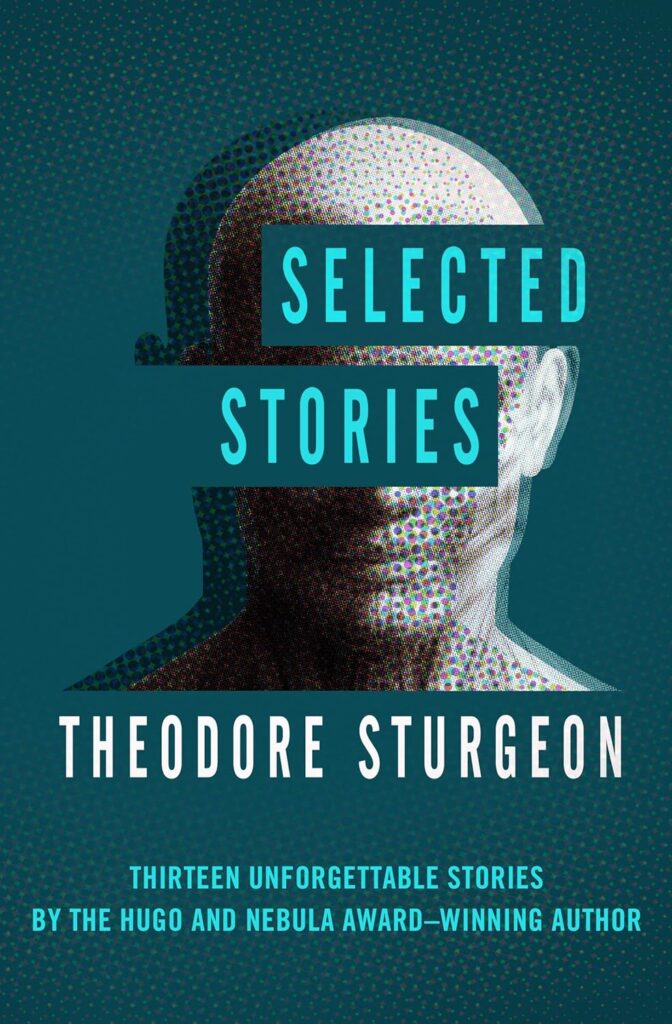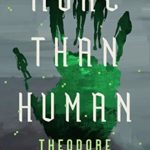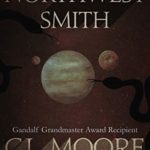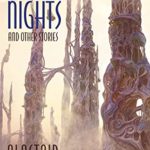(Revised 3/31/2024)
It’s a month since I came down with covid, and I’m still dealing with weird aftereffects. But an excellent way to get my brain going again came to hand in the form of The Selected Stories by Theodore Sturgeon. A lot of collections refer to their stories as “unforgettable” but this set of fifteen more than justifies that description. Whoever edited this volume didn’t provide any publication dates, but I looked them up and found that all but one, from 1970, were written in the 1940s and 1950s. Some have a dated feel and definite issues about neurodiverse and female characters and male gaze, but Sturgeon’s writing transcends those problems to pose powerful questions about humanity.
I’ll mention a few of the Selected Stories by Theodore Sturgeon in order to highlight aspects of his writing that I find especially compelling. Offering sketches of them all doesn’t seem helpful since the bare plot of each story doesn’t convey what is most important.
One of Sturgeon’s great themes is the possible end of humanity and the chances it must seize to prevent total destruction. “Thunder and Roses” is the most moving of these stories for me. It takes place on an army base in the US after hundreds of nuclear warheads have destroyed most of the country. (This story dates to 1947, when the world was just getting used to atom bombs and their horrific potential.)
Pete Mawser is struggling to keep a sense of normalcy as he watches people slowly dying of radiation poisoning or killing themselves to end the pain. When he finds himself strangely drawn to a straight razor, he puts it in a high temperature oven to melt it down. One night, a great singer named Starr Anthim is scheduled to perform. She is known for her incredible magnetism even when she appears on video, as Pete sees her. She sings a song full of hope that is part of her argument that the US must not strike back at its enemies because to do so when render the entire earth sterile and unfit for humanity.
“Let us die with the knowledge that we have done the one noble thing left to us. The spark of humanity can still live and grow on this planet. It will be blown and drenched, shaken and all but extinguished, but it will live if that song is a true one. It will live if we are human enough to discount the fact that the spark is in the custody of our temporary enemy. Some—a few—of his children will live to merge with the new humanity that will gradually emerge from the jungles and the wilderness.”
Selected Stories by Theodore Sturgeon, Kindle edition, Page 15
Pete meets Starr later, and she tells him she is dying of radiation she was exposed to in the first attack. She convinces him not to help set a counterattack in motion and then collapses. As she is dying, she impresses on Pete the power of her message, that even if humans don’t make it, some other life form should have a chance to survive and evolve. When Pete’s friend discovers that the base they’re on has the machinery to signal the launching of missiles, he sets about dismantling it completely. The story ends with Pete saying “into the far future,” “You’ll have your chance … And by heaven, you’d better make good.”
“The Golden Helix” and “The Skills of Xanadu” have a similar theme, but surviving humans, lost on distant planets, get help from alien beings. “The Golden Helix” makes a powerful statement about the need for the few surviving humans, who are starting to produce mutating offspring that appear to regress in evolutionary terms, must learn to accept the new forms of life they are producing or simply go extinct.
There is an especially engaging version of the idea of aliens helping humans see the best in themselves in “The [Widget], the [Wadget], and Boff”. The story concerns two aliens on earth who decide to take on human bodies and focus on a small group of people living in a boarding house. Their aim is to see if the humans possess a certain mental faculty that supersedes others to provide an understanding of a whole life all at once. The aliens call it Synapse Beta sub Sixteen. The story is a fascinating character study that focuses in turn on each of the boarders. Sturgeon has a way of nailing characters through their distinctive ways of thinking. For example, Phil Halvorsen, who is in the vocational guidance field, one day happens to be studying the display window of a pawnshop. Here’s how Sturgeon describes his mind at this moment:
“Like the window and its contents, and the dark recesses inside, his thoughts were miscellaneous, cluttered, captured in that purgatory of uselessness wherein things are not dead, only finished with what they have been and uncaring of what will happen to them and when. His thoughts were binoculars without eyes, cameras without film, silent guitars and unwound watches.”
Selected Stories by Theodore Sturgeon, Kindle edition, Page 274
He looks closely at the guitars, then at the violins and is struck by the differences in design between these two. And his eye travels over other objects until struck by the sight of guns. He is mystified as to why they should intrigue him until he starts imagining a bizarre weapon with a rolled sheet-metal barrel, a simple catch attached to a string instead of a trigger, the strange device angled upward like a cannon. He keeps dissecting this apparition in his mind, following the logic of every part of its construction, comparing it to a dueling pistol that would only shoot once.
After a long process of trying to understand its purpose, he realizes that he is imagining a gun that would fire once at him, between his eyes, then cease to exist. And he would be dead, he realizes, “gladly.” So his mind opens to the conviction that he wants to be dead. But why should he want to be dead? He is puzzled by this seemingly illogical idea that he arrived at by his intensely intellectual process. And this becomes the central focus of his thinking.
So it goes with each resident at the boarding house. Their life histories unfold through their characteristic wants and compulsions. Some have never thought deeply about why they live as they do, others have thought exhaustively, like Halvorsen, but without understanding. Then all face questions from the kindly owners of the boarding house, the Bittlemans, that go to the heart of what they want and care about most deeply. A crisis sends them all to a new level of self-realization, as the aliens complete their research on Synapse Beta sub-Sixteen. This is one of the most remarkable stories I’ve ever read, mostly for the detailed way in which Sturgeon presents each character.
There are a few horror stories in this collection, and even though I’m not a big fan of that genre, I found these mostly compelling reading. “It” is one of the first stories (from the 1940s) that featured a monster assembled of plant material around a human skeleton. This influenced a long line of later “swamp thing” stories by other writers. Equally influential was “Killdozer!”, also from the 1940s, that portrays a bulldozer that becomes possessed by an ancient demon when it disturbs a long-buried tomb on a South Pacific island during World War II. Sturgeon fills this novella with a detailed knowledge of the operation of several heavy earth-moving machines as the workers try to stop the crazed dozer from killing them all. One story, more like psychological horror, “Bianca’s Hands,” is the one I really don’t like, partly because it labels the title character as an imbecile in the first paragraph, but also because it is the most predictable story in this collection.
I’ll mention just two others that are perfect in vastly different ways. “The Man Who Lost the Sea” blends the perspectives of a kid playing with his toy models on a beach and of an ill man apparently partly buried in the sand. It’s a brilliant story that gradually brings two points of view together for its ending, after giving a powerful description of the boy’s experience of near drowning. “Slow Sculpture,” from 1970, won both Hugo and Nebula awards. It’s a brilliant story about a disillusioned, reclusive inventor who saves a young woman from a malignant cancer by giving her one of his strange treatments. At the heart of his existence is an old bonsai tree which comes to symbolize the care needed to nurture relationships. The story ends at just the right moment of self-realization.
I’m sure that among the 200 or so stories by Theodore Sturgeon there are many that miss the mark, but fourteen of the fifteen in this collection are all gems. I would rank the book with the great collection Her Smoke Rose Up Forever by James Tiptree, Jr (Alice Sheldon), though these two authors have drastically different approaches. My one complaint is that there are no story notes or dates, though the Kindle edition (not the paperback), does have interesting general material about Sturgeon’s life. If you’ve never read Sturgeon, here is a perfect place to begin.





Leave a Reply